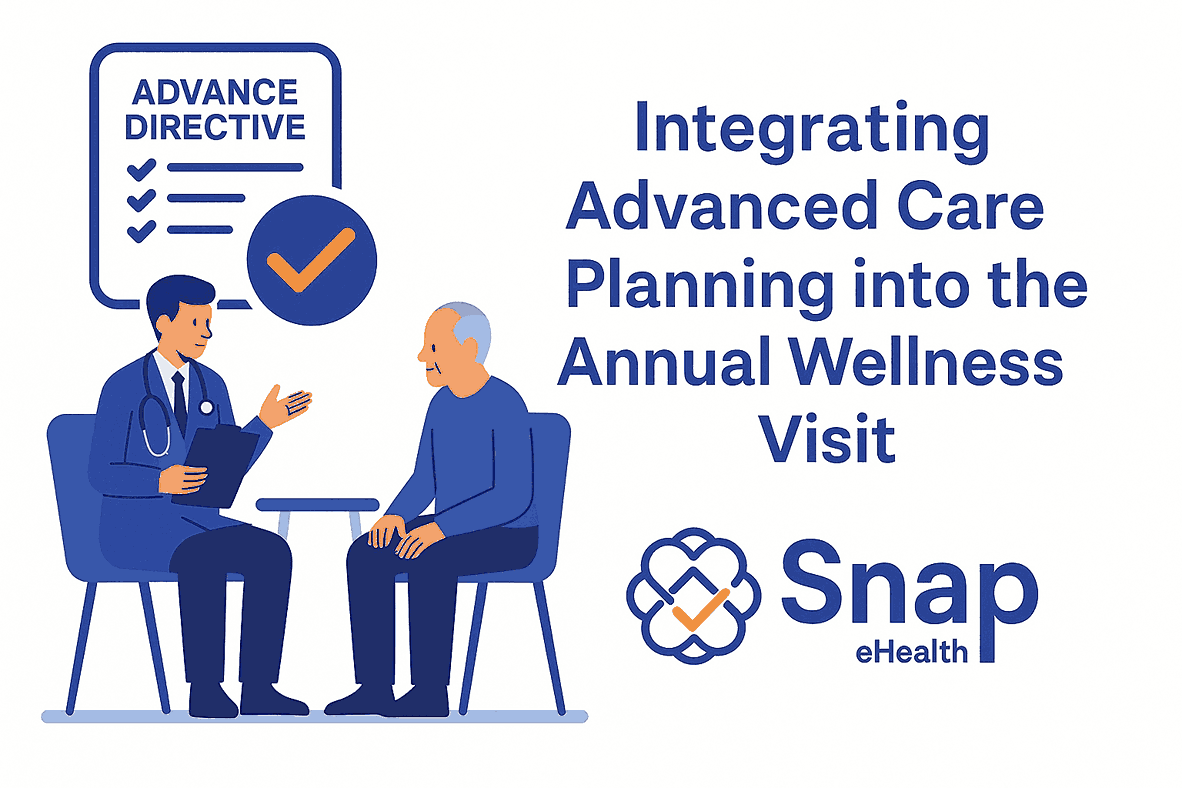

In the ever-evolving landscape of value-based care, maximizing both patient outcomes and reimbursement opportunities is key. One such opportunity lies in conducting Advanced Care Planning (ACP) during the Medicare Annual Wellness Visit (AWV)—a natural pairing that improves care continuity and patient satisfaction.
Advanced Care Planning is a patient-centered process that enables individuals to make decisions about their future medical care. This typically includes discussions about:
These conversations help ensure care aligns with the patient's values, particularly in serious illness or emergency situations.
The AWV provides an ideal setting for ACP because it is:
By incorporating ACP into the AWV, providers can better align care plans with patient goals, reduce unwanted interventions, and improve overall satisfaction and quality scores.
→ Important Tip: When you bill for Advanced Care Planning during an Annual Wellness Visit, you must use a modifier 33, indicating it’s a preventative service, to ensure the deductible and coinsurance is waived.
ACP isn’t just about checking a box—it’s about honoring a patient's voice in their care. By integrating ACP into the Annual Wellness Visit, providers create a more holistic, values-driven care plan and unlock a valuable reimbursement opportunity.
Encourage your care teams to normalize ACP conversations. With the right workflows, you can improve patient outcomes, meet quality measures, and ensure Medicare compliance—all in a single visit.
Need help setting up your ACP workflows or improving AWV completion rates? Snap eHealth offers turnkey solutions to boost preventive care engagement and maximize Medicare reimbursement. Contact us today to learn more.
